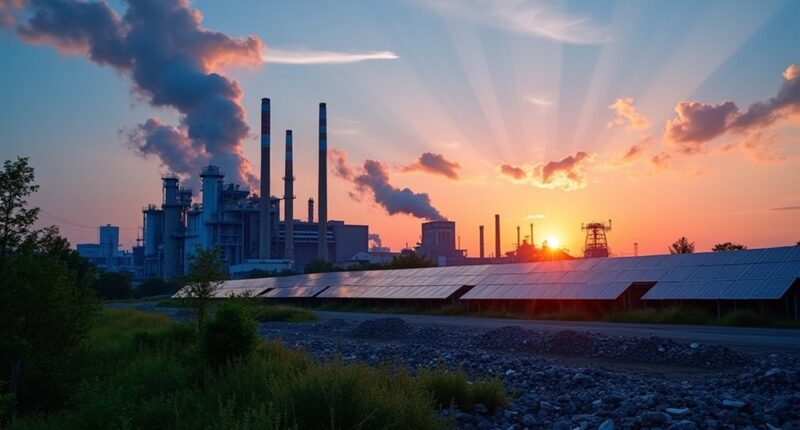Steel Industry Emission Reductions
The steel industry, often overlooked in discussions about climate change, plays a surprisingly hefty role in global CO2 emissions, contributing between 7% and 9% of the total. It’s as if the steel industry is the quiet kid in class—just sitting there while everyone talks about the flashy tech companies. Yet, it’s responsible for a significant chunk of the emissions pie, with its production methods being key players.
The steel industry may be quiet, but it’s a major player in global CO2 emissions, holding 7% to 9% of the total.
Currently, about one-third of steel is produced via the blast furnace/basic oxygen furnace (BF-BOF) route, which relies heavily on coal coke—essentially a rock star for carbon emissions. On the flip side, the electric arc furnace (EAF) route, responsible for roughly 67% of production, offers a much greener alternative, using electrification to recycle scrap steel. Talk about a glow-up!
With an ambitious agenda, the steel industry has set its sights on reducing its primary steel intensity by 45% and secondary steel by 65% by 2030. That’s like deciding to cut your soda intake while still enjoying the occasional slice of cake. Moreover, achieving Paris Agreement goals requires a 90% reduction in emissions by 2050, which adds pressure to these targets. The U.S. aims for near-zero greenhouse gas emissions in steel production by 2050, all while boosting output by 12%, aligning with the goal of near-zero emissions steel production established at COP26.
Innovative technologies like clean hydrogen and carbon capture are leading the charge. Hydrogen can potentially reduce emissions by up to 97%—though it comes with a price tag that makes it feel like buying a luxury car.
Carbon capture and storage (CCUS) also promises to drastically reduce emissions but requires a hefty investment. Similar to how DeFi technologies are revolutionizing traditional finance, these innovations are transforming conventional steel production methods.
Meanwhile, advancements in EAF technology are paving the way for near-zero-emission steel, especially when powered by renewable energy. Countries like China are ramping up EAF production, proving that the future of steel might just be as green as it gets.
With over 90% of global steelmaking companies committing to net-zero targets, it seems the industry is finally catching up to the climate conversation, proving that even the quiet ones can surprise us when it matters most.









